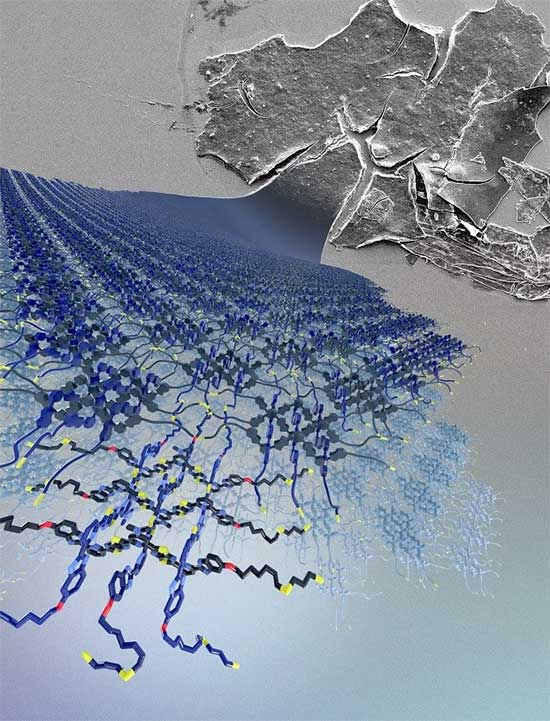Knitting molecular fibers into fabric, British researchers set a record by creating the world's smoothest fabric
The textile industry has been with people since the dawn of consciousness. We already know how to braid fish nets, knit clothes to wear to avoid the cold, and over time, this life-sustaining activity goes up in the direction of social development. We range from fabrics as thin as a few millimeters from clothing made of plant-based fibers, to fabrics several micrometers thick like wool, cotton or synthetic polymers.
For the first time, a team of scientists at the University of Manchester has developed the technique of weaving molecules into two-dimensional layers. Through that, they have created a thin woven fabric with the number of threads per unit area of 40-60 million yarns.
For ease of comparison: the finest fabric of the Egyptians contained only about 1,500 threads/unit area, while according to industry standards, cloth reaching 150 threads/unit area was acceptable. and 180 will be used for good quality fabrics.

Illustration of the world's thinnest fabric.
The art of knitting, layer upon layer, occurs frequently in nature, with the image of birds grafting branches into nests. As technology progressed, new materials and advanced weaving and knitting techniques appeared gradually. The team tried using a long polymer chain to knit in layers, to see if its strength and flexibility could be similar to that of a regular woven fabric.
Scientists use chemistry to knit tiny polymer fibers. Iron atoms and negatively charged ions work together to weave blocks of matter made of carbon, hydrogen, oxygen, and nitro, and sulfur atoms. The blocks of matter connect with each other, forming a single fabric that is only 4 nanometers long.
Professor David Leigh of the University of Manchester commented: 'Weaving molecular fibers in this way opens up new improved properties. Fabrics are twice as strong as the fibers that form them, and when torn, they separate like paper without lint like regular yarn. The sheet of matter also acts like a mesh, allowing small molecules to pass through while trapping larger molecules.
'This is the first example of a layered fabric woven from molecules. [Method] Molecular weaving opens new avenues for changing the properties of plastics and other materials,' he continued.
- Fabrication of fabric fibers from animal skin and bones? How?
- Russia found materials for producing 'super-armor' armor for firefighters
- How is wool 'turned' into fabric?
- Knitting is no less a cure for yoga
- Waterproof fabric thanks to its ability to drain water
- British scientists create the world's tightest node
- Japanese fabric color change by temperature
- Technology 'turns' old jeans into new ones
- Intelligent fabric can detect and protect against harmful gases
- The weather is hot, what kind of fabric is best for hot sun protection?
- Technology time, even fabric can be woven from fiber, led
- New algorithms predict molecular behavior and tooth decay drugs without filling
 The most famous scientific failures in history
The most famous scientific failures in history Mysterious genius mechanic and the machine froze time
Mysterious genius mechanic and the machine froze time The son carries the 'bad gene' of genius Albert Einstein
The son carries the 'bad gene' of genius Albert Einstein Isaac Newton
Isaac Newton